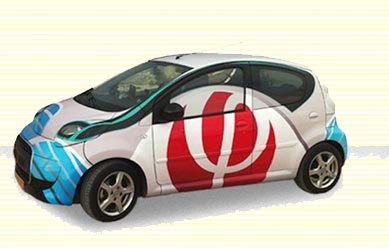20
2013
April 20 2013 |
Aluminum, not Lithium. Swap, Don't Recharge. 
In Israel, Phinergy is developing both aluminum-air batteries and rechargeable zinc-air batteries. Given the higher stored energy potential, the company seems to have a preference for its aluminum-air energy systems for vehicular use. From the Phinergy website:
The life cycle of aluminum enables to maintain global energetic balance. Phinergy's aluminum is produced in places where energy is clean and cheap, such as electricity from waterfalls. It then serves as a means for transporting this energy to places where it is required. When used in an aluminum-air battery, aluminum turns into aluminum hydroxide. Aluminum hydroxide can then be recycled in the aluminum factory, enabling a closed and sustainable life cycle. (Note the words above, "mechanically reloaded" aka "swapped.") Now this from California ZAP, an automotive company incorporated in California and headquartered in Santa Rosa, California announced that the battery Swap version of the E380 SUV has been approved by China National Grid for its battery swap stations in China, based in Hangzhou, Zhejiang Province. The Battery Swap Version of E380 SUV (Model E380-S) was designed specifically to work with the robotic system used for battery swapping as specified by China National Grid. The battery packs that are used have been standardized to fit the robotic arm and also the recharging cabinets in the government funded charging stations that are being deployed by China National Grid. China National Grid (C-NG), the government monopoly that supplies electric power to China has launched extensive programs in selected provinces to support fast battery swapping. Generally, the swap out and replacement takes no more than 6 minutes to complete. In order to stimulate the adoption of Electric Vehicles (EVs), C-NG is promoting the sale of EVs without including the cost of the lithium batteries, and the batteries will be leased from C-NG or authorized funding partners. This business model is being adopted by taxis in Hangzhou, and also by a number of leasing companies that are working in partnership with C-NG. The vehicles could be leased to owners and paid over a period of several years and the cost of the batteries is financed by C-NG and amortized over that period of time. ZAP Jonway's E380-S, developed by ZAP Hangzhou Joint Venture was done in collaboration with China National Grid's engineers and is an alternative model to the E380 SUV that was type approved in January 2013. This E380-S model will undergo type approval in the battery swap configuration. As a follow on product to the E380, the type approval will take shorter time than the first one and the plan is to complete this by the end of this summer. The target market will be taxis and leasing companies where fast battery swap-out is needed to give quick turnaround for a "refill". ZAP Hangzhou JV team is working with a few leasing companies to potentially offer financing to taxis and interested buyers. The robot and the automated battery swap and recharge station are compact and were designed to easily fit into an existing gas station. This automated system was designed by C-NG's engineering team, and C-NG plans to make this available for the international markets as well. By standardizing the removable battery packs that fit with the robot arm, C-NG has simplified the EV designs and thus accelerated the advancement and adoption of EV in the auto industry in China. ZAP Hangzhou JV's engineers continue to work closely with China National Grid's team to expand the availability of the E380-S and their automated battery swap stations in other major cities in China, and potentially elsewhere in the world. (The E380, by all appearances, is a reworked, made-in-China second generation Toyota RAV-4.) Swappable aluminum-air batteries, with their low cost materials and components, ease of manufacture, full recycleability, are likely to be far less expensive than lithium ion batteries; dramatically lowering the cost electric vehicles, even if the batteries as an additional cost, are managed under a leasing program. Phinergy drives over 300 km (200 miles) on aluminum-air batteries. The battery swap robot, as developed by China National Grid, would make a low cost investment for existing petrol fueling stations to also offer battery swapping for additional business opportunities. (Other battery swapping schemes require entire swapping stations to be built.) The longer EV range that seems possible with aluminum-air batteries, combined with battery swapping would give drivers the same unlimited driving range as with petroleum-fueled cars. There'd be NO range anxiety with battery swapping. Certainly there would be technological issues to resolve, but cheap, powerful, easily recyclable batteries combined with fast refueling with battery swapping would offer a quick path to vehicle electrification.
|
|---|
Send this article to a friend:
 |
 |
 |